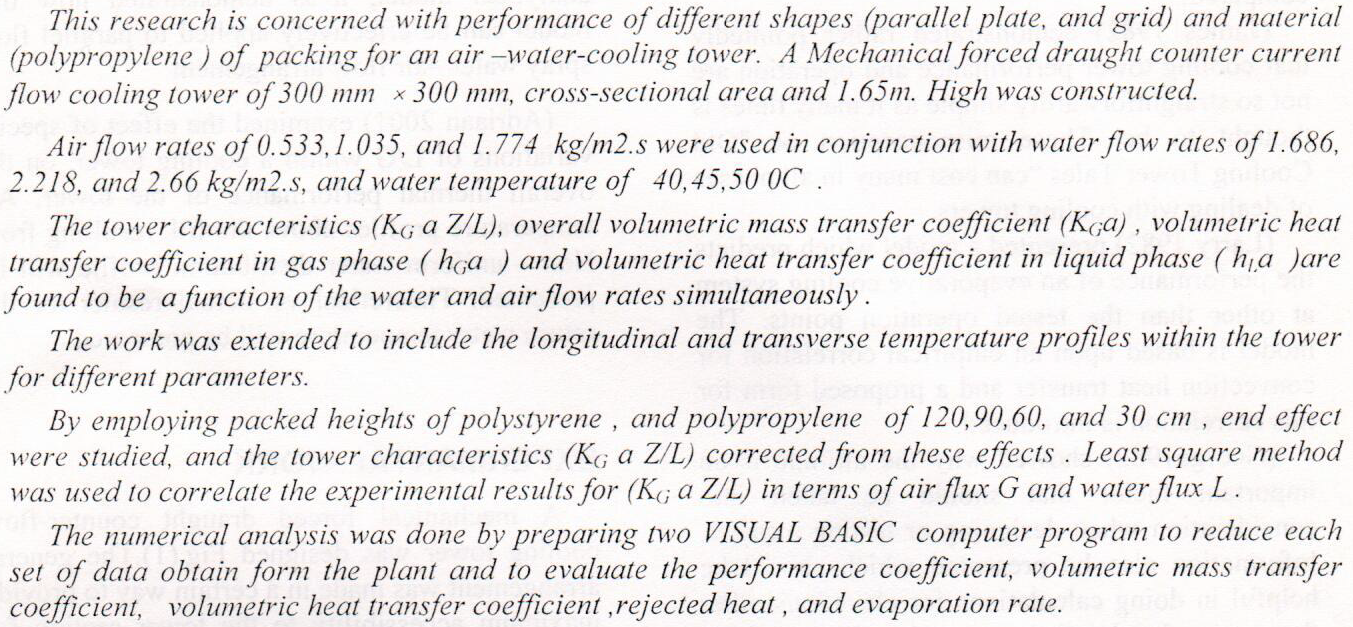
We consider the outflow of water from the peak of a triangular ridge into a channel of finite depth. Solutions are computed for different flow rates and bottom angles. A numerical method is used to compute the flow from the source for small values of flow rate and it is found that there is a maximum flow rate beyond which steady solutions do not seem to exist. Limiting flows are computed for each geometrical configuration. One application of this work is as a model of saline water being returned to the ocean after desalination. References Craya, A. ''Theoretical research on the flow of nonhomogeneous fluids''. La Houille Blanche, (1):22–55, 1949. doi:10.1051/lhb/1949017 Dun, C. R. and Hocking, G. C. ''Withdrawal of fluid through
... Show More (1)
(1)
 (87)
(87)
This research studying the phenomenon of Doppler (frequency Doppler) as a method through which the direction and speed of the blood cells flows in blood vessels wear measured. This Doppler frequency is relied upon in medicine for measuring the speed of blood flow, because the blood flow is an important concept from the concepts of medicine. It represents the function and efficient of the heart and blood vessels in the body so any defect in this function will appear as a change in the speed of blood flow from the normal value assumed. As this speed changes alot in cases of disease and morbidity of the heart, so in order to identify the effect of changing the Doppler frequency on the speed of blood flow and the relationship of
... Show MoreSteady conjugate natural convection heat transfers in a two-dimensional enclosure filled with fluid saturated porous medium is studied numerically. The two vertical boundaries of the enclosure are kept isothermally at same temperature, the horizontal upper wall is adiabatic, and the horizontal lower wall is partially heated. The Darcy extended Brinkman Forcheimer model is used as the momentum equation and Ansys Fluent software is utilized to solve the governing equations. Rayleigh number (1.38 ≤ Ra ≤ 2.32), Darcy number (3.9 * 10-8), the ratio of conjugate wall thickness to its height (0.025 ≤ W ≤ 0.1), heater length to the bottom wall ratio (1/4 ≤ ≤ 3/4) and inclination angle (0°, 30° and 60°) are the main consid
... Show MoreThis paper reports test results and describes a numerical investigation of the effectiveness of using carbon fibre reinforced polymer (CFRP) fabrics for strengthening concrete cylinders that have been undamaged and damaged due to heating under preload. The purpose of this research was to investigate whether there is any difference in the performance of CFRP-wrapped cylinders if the wrapping is done under preload, and those for which neither heating, cooling nor wrapping was done under preload. The cylinders were exposed to 30% of maximum load at ambient temperature during heating and cooling before being wrapped under preload. Of 18 Ø 100 × 200 mm identical cylinders, 6 were left as control samples without heating, 12 were exposed t
... Show More (15)
(15)
 (11)
(11)
The current study was conducted with an aim to know the effect of adding different concentrations of pomegranate peels alcoholic extract (PPAE) on the traits of Awassi ram semen stored at 5°C. Eight ejaculations from three Awassi rams were collected, mixed and diluted with TRIS extender. The semen samples were divided into four equal parts, and then the alcoholic extract of pomegranate peels was added at concentrations of 0, 100, 200 and 300 mg/ 1 ml of extender, which represented each of the treatments C, T1, T2 and T3, respectively. The samples were stored at 5 ° C and semen examinations were performed during periods 0, 24, 48, 72 and 96 hours after collection. Semen traits included calculation percentage of individual motility, viabili
... Show More (4)
(4)
Computational study of three-dimensional laminar and turbulent flows around electronic chip (heat source) located on a printed circuit board are presented. Computational field involves the solution of elliptic partial differential equations for conservation of mass, momentum, energy, turbulent energy, and its dissipation rate in finite volume form. The k-ε turbulent model was used with the wall function concept near the walls to treat of turbulence effects. The SIMPLE algorithm was selected in this work. The chip is cooled by an external flow of air. The goals of this investigation are to investigate the heat transfer phenomena of electronic chip located in enclosure and how we arrive to optimum level for cooling of this chip. These par
... Show MoreAbstract
In this paper presents two dimensional turbulent flow of different nanofluids and ribs configuration in a circular tube have been numerically investigation using FLUENT 6.3.26. Two samples of CuO and, ZnO nanoparticles with 2% v/v concentration and 40 nm as nanoparticle diameter combined with trapezoidalribs with aspect ratio of p/d=5.72 in a constant tube surface heat flux were conducted for simulation. The results showed that heat flow as Nusselt number for all cases raises with Reynolds number and volume fraction of nanofluid, likewise the results also reveal that ZnO with volume fractions of 2% in trapezoidal ribs offered highest Nusselt number at Reynolds number of Re= 30000.
Key
... Show More (1)
(1)
